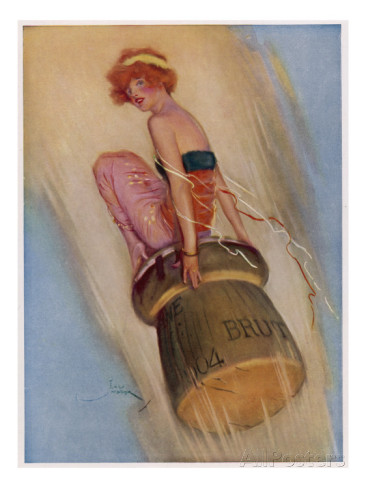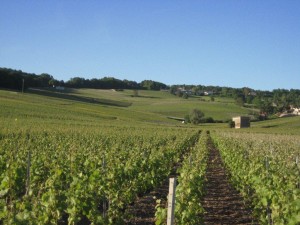I have not quite come down to earth yet! Last week I received some news that was an honour, but also very overwhelming once the reality hit.
Early on Tuesday morning, I received a call from the Champagne Bureau in Sydney telling me that I had been selected as a finalist in the Vin de Champagne Awards. In the PROFESSIONAL division! Once I stopped jumping around the room and recomposed myself, the words PROFESSIONAL DIVISION started to sink in.
Before I explain about these awards, I should explain a bit about what the Champagne Bureau in Australia is, and why these awards are so important to the champagne industry in Australia.
The Champagne Bureau is the Australian arm of the Comité Interprofessionnel du Vin de Champagne (CIVC). The CIVC is essentially the trade association representing all the Champagne Houses and Growers and responsible for quality enforcement and the protection of the Champagne appellation.
It was created in 1941 to help formalise talks between the Growers and Houses in order to improve delimitation, reinforce the strict regulations and defend the name ‘Champagne’ and all it stands for. Champagne has a reputation and prestige that it worth protecting the world over.
It is not only the name that is heavily regulated, it is the whole process that goes in to making champagne. A lot of the rules serve to maintain the quality of champagne – there are rules on harvest yields; methods of vine pruning; vintage champagnes (produced exclusively from a single harvest, 3 years of ageing in a bottle); height, spacing and density of plantings; setting January 1 as the date that wines can be bottled after the previous year’s harvest: the quantity of juice that can be extracted per kilo; and many others things.
Outside of France the CIVC takes the incorrect use of the word Champagne very seriously. They will prosecute any company or individual that they see as profiting from their prestige and reputation. They have won some big cases, including stopping countries calling their sparkling wine champagne. In 1971 they won a case against ‘Spanish Champagne’, in 1972 Japan agreed not to use the Champagne appellation, and the same for Canada in 1974. It is the same for Australia, where, as in other countries, sparkling wines that are produced using the traditional champagne methods and grapes are not even allowed to call themselves ‘Methode Champenoise’ any more. It must say ‘Methode Traditionelle’ on the bottle.
Even other products that are not alcohol related have come under fire. In 1993, the Paris Court of Appeal confirmed that Yves Saint Laurent could not name their recently launched perfume ‘Champagne’, because it’s usage was reserved to wines originating and produced in Champagne. Other products that have lost court cases are Seita’s ‘Champagne’ cigarettes, and ‘Perrier’ mineral water in Germany.
I even had a visit from the legal department of the CIVC when I visited their offices in Epernay in May this year. They were incredibly nice to me, but explained that the former name of my blog ‘My Champagne Daze’, was in fact infringing on intellectual property laws by having the word ‘Champagne’ in the URL. Even though it was a personal blog and not a money making venture. They take the word ‘Champagne’ VERY seriously, which is why that is the former name of my blog!
It is all very well and good to have all these regulations, but the only way that people will be able to understand and respect the product that is being protected is through education. The Vin de Champagne Awards were started by the Champagne Bureau in Australia in 1974, and have proved to be a great educational and promotional tool ever since. Statistics have shown a notable spike in the consumption of Champagne in Australia since the awards were initiated, and Australia currently the 6th largest export market – amazing for a country with a relatively small population.
The Vin de Champagne Awards is made up of two parts. Part one is a series of essay topics that contestants are asked to answer as accurately as possible. The essays are designed to test the entrants knowledge on champagne history, wine making methods, and opinion based on broad knowledge. The finalists are chosen from the results of these essays and sent down to Sydney from all over Australia for part two. Part two consists of a blind tasting of 3 different champagnes and an oral exam in front of the panel of judges. This year’s judges are past professional winners Huon Hooke and Peter Bourne, past amateur winner Bernadette O’Shea, and Elisabeth Drysdale, director of the Champagne Bureau. The day culminates in a black tie dinner with about 7 courses and 15 different champagnes to taste.
There are two divisions of the competition – a professional division, for those who make their living from the food and wine industry; and an amateur division, for those with a passion for champagne.
The Champagne Bureau’s website says that past winners of this prestigious award are some of Australia’s most knowledgeable wine industry personnel including winemakers, journalists, restaurateurs, sommeliers, commentators and educators.
Are you starting to see why I am feeling just a little bit overwhelmed? When reading through the descriptions of the divisions, I see myself as someone with a passion for champagne who happens to import some champagnes from small growers. Amongst other things. I don’t really have any formal wine training.
So it is a great honour, and an absolutely fabulous learning experience for me. I am on the ride of my life, and whatever the outcome on September 22, I will know that I gave it my best shot.
Wish me luck!



At first, I thought this image was a tattoo you had acquired! So proud of you. x